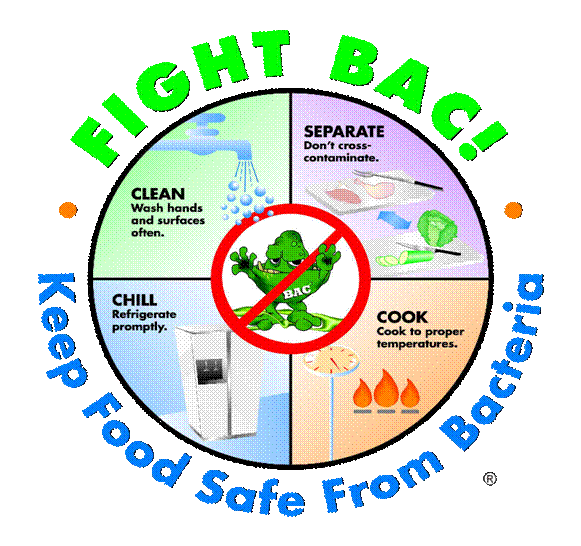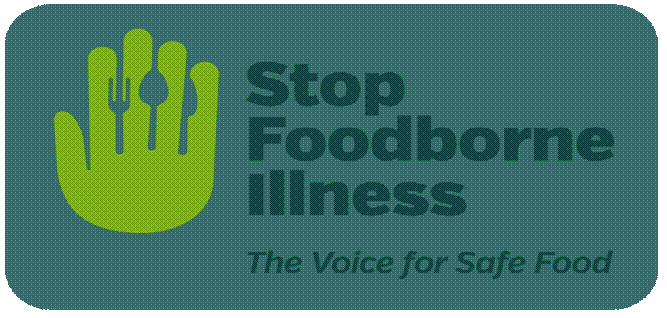|
Tổng hợp các nghiên cứu về ký sinh trùng lây truyền qua đường tiêu hóa và thực phẩm
Bệnh lây truyền qua đường thực phẩm nói chung (gồm virus, vi khuẩn, prion, nấm, ký sinh trùng đơn bào) hiện đang là vấn đề y tế nghiêm trọng của nhiều quốcgia, nhất là các quốc gia đang phát triển có điều kiện vệ sinh an toàn thực phẩm chưa đạt và chưa có chế tài kiểm soát chặt chẽ. Các vấn đề này có thể làm ảnh hưởng đến sức khỏe cộng đồng và lây truyền nhanh chóng nếu không có biện pháp ứng phó kịp thời và triệt để. Dưới đây là một số công trình nghiên cứu về vệ sinh an toàn thực phẩm nói chung và bệnh ký sinh trùng truyền qua con đường thức ăn. 1.I. Edward Alcamo; Jennifer M. Warner (2009). Schaum's Outline of Microbiology. McGraw Hill Professional. pp. 144-. ISBN 978-0-07-162326-1. 2.Nyle C. Brady and Ray R. Weil (2009). Elements of the Nature and Properties of Soils (3rd Edition). Prentice Hall. ISBN 9780135014332. 3.Marcela F. Lopes, Dario S. Zamboni, Hugo D. Lujan et al., (2012). Immunity to Protozoan Parasites. Journal of Parasitology Research, Vol. 2012, Article ID 250793. 4.Clinical and Laboratory Standards Institute. Procedures for the recovery and identification of parasites from the intestinal tract; approved guideline. CLSI document M28-A2. 2nd ed. Wayne, PA: Clinical Laboratory Standards Institute; 2005. 5.Johnston SP, Ballard MM, Beach MJ et al., (2003). Evaluation of three commercial assays for detection of Giardia and Cryptosporidium organisms in fecal specimens. J Clin Microbiol. 2003;41(2):623-6. 6.Johnston SP, Sriram R, Qvarnstrom Y, Roy S, Verani J (2009). Resistance of Acanthamoeba cysts to disinfection in multiple contact lens solutions". J Clin Microbiol 47 (7): 2040-5. 7.Maďarová, Lucia; Trnková, Katarína et al., (2010), A real-time PCR diagnostic method for detection of Naegleria fowleri, Experimental Parasitology 126 (1): 37-41. 8.Sarkar P, Gerba C (2012), Inactivation of Naegleria fowleri by chlorine and ultraviolet light. J AWWA. 2012;104:51-2. 9.Shoff ME, Joslin CE, Tu EY, Kubatko L, Fuerst PA (2008). Efficacy of contact lens systems against recent clinical and tap water Acanthamoeba isolates. Cornea 27 (6): 713-9. 
Hình 1
10.Yoder JS, Eddy BA, Visvesvara GS et al., (2010), The epidemiology of primary amoebic meningoencephalitis in the USA, 1962-2008, Epidemiol Infect. 2010;138:968-75. 11.Parasites and Health: Balantidiasis [Balantidium coli] DPDx - Balantidiasis. 5 Dec. 2008. CDC Division of Parasitic Diseases. 16 May 2009. 12.Schister, Frederick L., Lynn Ramirez-Avila (2008). Current World Status of Balantidium coli. Clinical Microbiology Review 21 (4): 626–638. 13.Arora DR, Arora B (2009). AIDS-associated parasitic diarrhoea. Indian J Med Microbiol.;27(3):185-90. 14.Baldursson S, Karanis P. (2011). Waterborne transmission of protozoan parasites: review of worldwide outbreaks - an update 2004-2010. Water Res. Dec 15 2011;45(20):6603-14. 15.Ben Ayed L, Yang W, Widmer G et al., (2012). Survey and genetic characterization of wastewater in Tunisia for Cryptosporidium spp., Giardia duodenalis, Enterocytozoon bieneusi, Cyclospora cayetanensis and Eimeria spp. J Water Health.(3):431-44. 16.Karanja RM, Gatei W, Wamae N (2007). Cyclosporiasis: an emerging public health concern around the world and in Africa. Afr Health Sci. Jun 2007;7(2):62-7. 17.Türk M, Türker M, Ak M, Karaayak B, Kaya T (2004). Cyclosporiasis associated with diarrhoea in an immunocompetent patient in Turkey. J. Med. Microbiol. 53 (Pt 3): 255-7. 18.Yu JR, Sohn WM (2003). A case of human cyclosporiasis causing traveler's diarrhea after visiting Indonesia". J. Korean Med. Sci. 18 (5): 738-41. 19.elasquez, J., Osvaldo, G., Risio, C. D., Etchart et al., (2014), Molecular characterization of Cystoisospora belli and unizoite tissue cyst in patients with Acquired Immunodeficiency Syndrome. Parasitology, 138, 279-286. 20.Fukuyo M., Battsetseg G., Byambaa B. (2002) Prevalence of Sarcocystis infection in meat-producing animals in Mongolia. Southeast Asian J. Trop. Med. Public Health. 33(3):490-495. 
Hình 2
21.Alvarado-Esquivel, C, Liesenfeld, O. et al (2010). Seroepidemiology of Infection with Toxoplasma gondii in workers occupationally exposed to water, sewage, and soil in Durango, Mexico. Journal of Parasitology 96 (5): 847-850. 22.Cook, AJ; Gilbert, RE; Buffolano, W; Zufferey et al., (2000). Sources of Toxoplasma infection in pregnant women: European multicentre case-control study. European Research Network on Congenital Toxoplasmosis,BMJ (Clinical research ed.) 321 (7254): 142-7. 23.Dattoli, V. C. C.; Veiga, R. V. et al., (2011). Oocyst ingestion as an important transmission route of Toxoplasma gondii in Brazilian urban children. Journal of Parasitology 97 (6): 1080-1084. 24.Dubey, JP; Ferreira, LR; Martins et al., (2011). Sporulation and survival of Toxoplasma gondii oocysts in different types of commercial cat litter. The Journal of parasitology 97 (5): 751-4. 25.Dubey JP, Velmurugan GV, Rajendran C et al, (2011). Genetic characterisation of Toxoplasma gondii in wildlife from North America revealed widespread and high prevalence of the fourth clonal type. Int. J. Parasitol. 41(11):1139-47. 
Hình 3
26.Flegr, J et al., (2013). Influence of latent Toxoplasma infection on human personality, physiology and morphology: Pros and cons of the Toxoplasma-human model in studying the manipulation hypothesis. The Journal of Experimental Biology 216:127-33. 27.Jones, JL; Dargelas, V; Roberts, J; Press et al., (2009). Risk factors for Toxoplasma gondii infection in the United States. Clinical Infectious Diseases 49 (6):878-84. 28.McConkey, GA; Martin, HL, Webster, JP (2013). Toxoplasma gondii infection and behaviour -location?. The Journal of Experimental Biology 216: 113-9. 29.Miller, CM; Boulter, NR; Ikin, RJ et al., (2009), The immunobiology of the innate response to Toxoplasma gondii, International Journal for Parasitology 39(1):23-39. 30.Pappas, G; Roussos, N; Falagas, ME (2009), Toxoplasmosis snapshots: global status of Toxoplasma gondii seroprevalence and implications for pregnancy and congenital toxoplasmosis. International Journal for Parasitology 39 (12): 1385-94. 31.Sakikawa, M; Noda, S; Hanaoka, M; Nakayama, H et al (2012), Anti-Toxoplasma antibody prevalence, primary infection rate, and risk factors in a study of toxoplasmosis in 4,466 pregnant women in Japan. Clinical and Vaccine Immunology : CVI 19 (3): 365-7. 32.Webster, JP; Kaushik, M; Bristow, GC; McConkey, GA (2013). Toxoplasma gondii infection, from predation to schizophrenia: can animal behaviour help us understand human behaviour. The Journal of experimental biology 216 (Pt 1): 99-112. 33.Gallas-Lindemann, C.; Sotiriadou, I.; Mahmoodi, M. R.; Karanis, P. (2013), Detection of Toxoplasma gondii oocysts in different water resources by Loop Mediated Isothermal Amplification (LAMP)". Acta Tropica 125 (2): 231-36. 34.Aikawa NE, Twardowsky Ade O, Carvalho JF, Silva CA et al. Intestinal microsporidiosis: a hidden risk in rheumatic disease patients undergoing anti-tumor necrosis factor therapy combined with disease-modifying anti-rheumatic drugs? Clinics. 2011;66(7):1171-5. 
Hình 4
35.Didier, ES. (2005), Microsporidiosis: An emerging and opportunistic infection in humans and animals. Acta Trop 94 (1): 61-76. 36.Heinz E, Williams TA, Nakjang S et al., (2012). The genome of the obligate intracellular parasite Trachipleistophora hominis: New insights into microsporidian genome dynamics and reductive evolution. PLoS Pathog. 2012 Oct;8(10):e1002979. 37.Ironside JE et al., (2007). Multiple losses of sex within a single genus of microsporidia. BMC Evolutionary Biology 7: 48. 38.Scallan E, Griffin PM, Angulo FJ, Tauxe RV (2011). Foodborne illness acquired in the United States-unspecified agents. Emerging Infectious Diseases. 2011;17(1):16-22. 39.CDC (2010). Surveillance for foodborne disease outbreaks-United States, 2007. Morbidity and Mortality Weekly Report. 2010;59(31):973–979. 40.Scallan, E., Griffin, P.M., Angulo, F.J., Tauxe, R.V. & Hoekstra, R.M. 2011. Foodborne illness acquired in the United States - unspecified agents. Emerging Infectious Diseases, 17(1):16-22. 41.Scallan, E., Hoekstra, R.M., Angulo, F.J., Tauxe, R.V. (2011). Foodborne illness acquired in the United States-major pathogens. Emerging Infectious Diseases, 17(1): 7-15. 42.Thomas, M.K., Murray, R., Flockhart, L., Pintar, K., (2013). Estimates of the burden of foodborne illness in Canada for 30 specified pathogens and unspecified agents, circa 2006. Foodborne Pathogens and Disease, 10(7):639-648. 43.Havelaar, A.H., Haagsma, J.A., Mangen, M.J.J., Kemmeren, J.M et al., (2012). Disease burden of foodborne pathogens in the Netherlands, 2009. InternationalJournal of Food Microbiology, 156(3): 231-238. 44.Ford, L., Kirk, M., Glass, K. & Hall, G. (2014). Sequelae of foodborne illness caused by 5 Pathogens, Australia, Circa 2010. Emerging Infectious Diseases, 20(11): 1865-1871. 45.Kirk, M., Ford, L., Glass, K. & Hall, G. (2014). Foodborne illness, Australia, Circa 2000 and Circa 2010. Emerging Infectious Diseases, 20(11):1857-1864. 
Hình 5
46.Vaillant, V., de Valk, H., Baron, E., Ancelle, T., Colin, P., (2005). Foodborne infections in France. Foodborne Pathogens and Disease, 2(3):221-232. 47.Tam, C.C., Rodrigues, L.C., Viviani, L., Dodds, J.P., Evans, M.R., Hunter, (2012). Longitudinal study of infectious intestinal disease in the UK: incidence in the community and presenting to general practice. Gut, 61(1): 69-77. 48.Lake, R.J., Cressey, P.J., Campbell, D.M. & Oakley, E (2010). Risk ranking for foodborne microbial hazards in New Zealand: burden of disease estimates. Risk Analysis, 30(5): 743–752. 49.Murrell, K.D. & Pozio, E. 2011. Worldwide occurrence and impact of human trichinellosis, 1986-2009. Emerging Infectious Diseases, 17(12):2194-2202. 
Hình 6
50.Torgerson, P.R., Keller, K., Magnotta, M. & Ragland, N. (2010). The global burden of alveolar echinococcosis. PLOS Neglected Tropical Diseases, 4: e722. 51.Carabin, H., Ndimubanzi, P.C., Budke, C.M., Nguyen, H., (2011). Clinical manifestations associated with neurocysticercosis: A systematic review. PLOS Neglected Tropical Diseases, 5(5): Art e1152. 52.Ndimubanzi, P.C., Carabin, H., Budke, C.M., Nguyen, H., Qian, Y.J. (2010). A systematic review of the frequency of neurocysticercosis with a focus on people with epilepsy. PLOS Neglected Tropical Diseases, 4(11): Art e870. 53.Budke, C.M., Carabin, H., Ndimubanzi, P.C., Nguyen, H. (2013). A systematic review of the literature on cystic echinococcosis frequency worldwide and its associated clinicalmanifestations. American Journal of Tropical Medicine and Hygiene, 88(6): 1011-1027. 
Hình 7
54.Torgerson, P.R. & Mastroiacovo, P. (2013). The global burden of congenital toxoplasmosis : A systematic review. Bulletin of the World Health Organization, 91(7):501-508. 55.Furst, T., Keiser, J. & Utzinger, J. (2012). Global burden of human food-borne trematodiasis: a systematic review and meta-analysis. Lancet Infectious Diseases, 12(3): 210-221. 56.Furst, T., Sayasone, S., Odermatt, P., Keiser, J. & Utzinger, J. (2012). Manifestation, diagnosis, and management of foodborne trematodiasis. British Medical Journal, 344:Art e4093.79. 57.McDonald, S.A., Devleesschauwer, B., Speybroeck, N., Hens, N., Praet (2015). Data-driven methods for imputing national-level incidence in global burden of disease studies. Bulletin of the World Health Organization, 93(4): 228-236. 58.Mas-Coma, S., Bargues, M.D. &Valero, M.A. (2005). Fascioliasis and other plant-borne trematode zoonoses. International Journal of Parasitology, 35(11-12):1255-1278. 59.Devleesschauwer, B., Praet, N., Speybroeck, N., (2015). The low global burden of trichinellosis: Evidence and implications. International Journal for Parasitology, 45(2-3): 95-99. 60.Torgerson, P.R. & Mastroiacovo, P. (2013). The global burden of congenital toxoplasmosis: A systematic review. Bulletin of the World Health Organization, 91(7):501-508.
|

